Go Beyond Iceberg Lettuce
Different Types of Lettuce and How to Use Them
By Engrid Winslow
There are many different types of lettuce and perhaps you were wondering how to use these various types. Here’s a general description of some different lettuce varieties which will take you beyond the traditional iceberg lettuce followed by a quick tutorial on growing them.
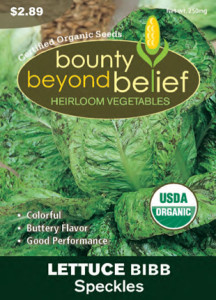
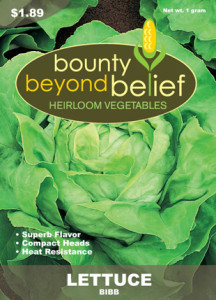
Butterhead
/Buttercrunch/Bibb/Boston – Any of the “B” lettuces form loose heads of large, softly ruffled leaves that range in color from bright yellow-green to magenta-tipped emerald. They have a slight crunch when you bite in, followed by a melt-in-your-mouth silkiness. The leaves are buttery and slightly sweet. They are perfect for use in sandwiches or salads and the largest outer leaves are great as a wrap for various fillings because of their pliability.
Romaine
forms a long, straight head of crisp leaves with a prominent center stem. They come in the familiar crisp, tall, green heads to shorter and fluffier versions that range from dark red to lime green with red speckles. They can be harvested when young for a tender and delicate salad. They have a mild crunch from the center stem when mature and are the classic lettuce for a traditional Caesar salad since it’s a perfect contrast to the creamy, cheesy dressing. It can also be used as a scoop for dips and holds up on a burger.
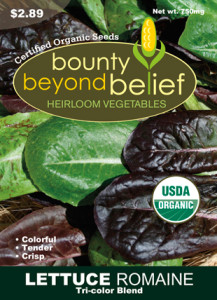
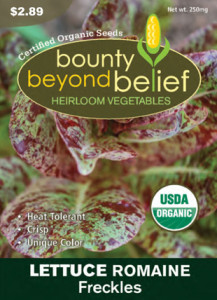
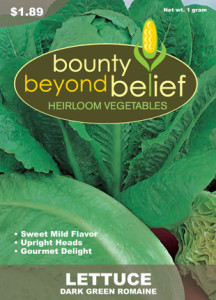
Oakleaf
lettuce has unusually shaped leaves that form a loose cluster with tender, crunchy stems. The flavors can range from sweet when young to slightly bitter if left longer to mature. They come in gorgeous colors of green but the dark red is a version high in anthocyanin
with a powerful punch of antioxidants. They are great in salads and when mixed with other lettuce types or on a sandwich.
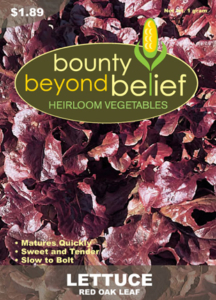
- With loose bunches of leaves connected at the base, the loose-leaf lettuces are known as bunching or cutting lettuces. They are typically mild, savory to sweet and crisp-tender. They are generally more heat-tolerant and some, such as Black Seeded Simpson, are slower to bolt than other types of lettuces.

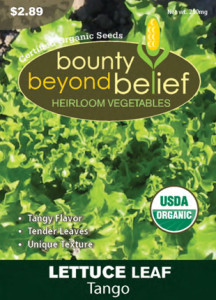
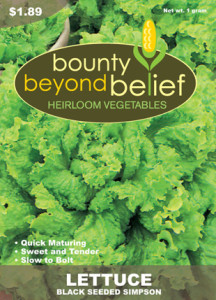
One of the best ways to use these lettuces is to combine them with other greens, such as arugula or baby kale in a salad and, lucky you, we have two blends that will do that for you.
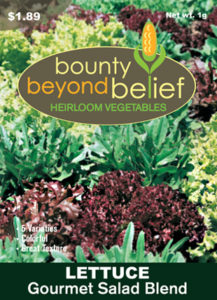
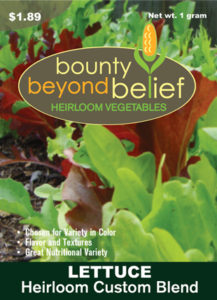
All lettuce varieties are very easily started from seed, both indoors and out in your vegetable beds. They take about one week to germinate, depending on temperatures. If starting indoors, be sure the seeds stay moist by spraying them gently from a spray bottle or bottom-watering until they germinate and the seedlings are strong enough to handle overhead watering. A plastic dome over the tray really helps with this.
The seeds are tiny and should be planted with a very light (no more than ¼ inch) layer of soil. If planted outdoors in cooler temperatures and cold soil they may take longer to germinate. Thin the seedlings to 3 inches apart and pull every other one for early salads leaving the rest (now 6” apart) to reach full size. Successive sowings every 3 weeks in short rows provide these tasty plants throughout the season. All lettuces will bolt and then become bitter in the heat and long days of summer, but you can delay this by mulching to keep the soil cool.
So go beyond iceberg lettuce and let us know how you like these other varieties!


Leave a Reply
Want to join the discussion?Feel free to contribute!